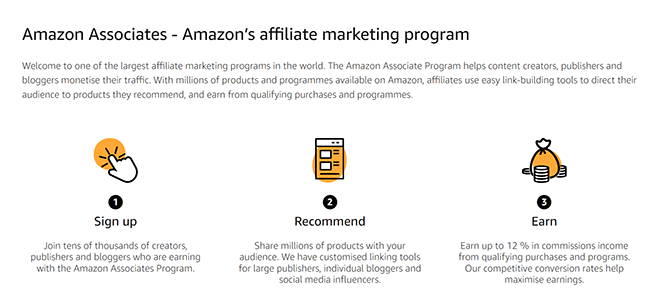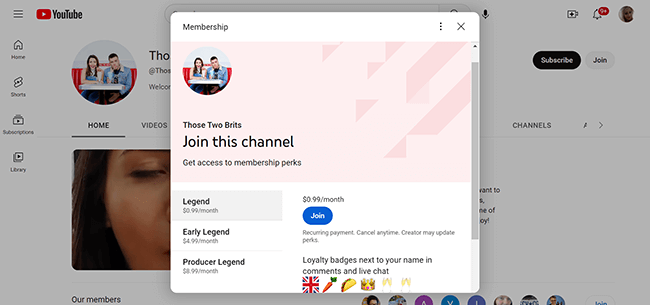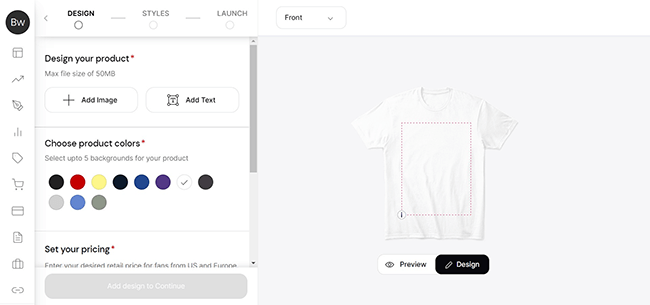7 Ways To Monetize Your YouTube Videos

YouTube has over 2.6 billion monthly active users. To put that into perspective, that translates to a quarter of the world’s population.
The bottom line: Video content is stratospherically popular. So, if you’re a video content creator, it makes sense to monetize your YouTube content.
But if you need help figuring out where to start, no worries. Here we’re walking through YouTube’s monetization features and providing advice on utilizing them to the fullest.
We’ve got lots to get through, so let’s crack on:
What’s YouTube monetization?
Simply put, it’s how your YouTube content earns money.
To give you a feel for whether forging an income from YouTube is possible, 394,000 people in the US in 2021 made money as full-time YouTube creators.
People make money from all kinds of video content, from cooking and travel to fashion, makeup, and much more. So, there’s no reason why you can’t too!
So, with that said, let’s explore how much YouTube creators are earning. Remember, this isn’t an exact science, and not everyone gets rich! But below, we have a couple of examples of non-celebs who have made big money:
- Mr. Beast, AKA Jimmy Donaldson. He has 136 million subscribers, generating 23.6 billion views since he started in 2012. So far, he has made $54 million.
- Smosh. This collective of slapstick comedians is one of the oldest on YouTube, joining the platform in 2005. They have earnt more than 11 million with iconic video-game parodies and music videos and have over 24 million subscribers.
Of course, in celeb land, there’s Justin Beiber: with 71.7 million subscribers, generating 29.8 billion views since 2007. His net worth is $36.2 million (on YouTube).
But, getting back down to earth:
- The average YouTuber earns $2 and $12 per 1,000 views.
- Creators receive 55% of ad revenue generated from their channel. So if an advertiser pays $100, you get $55.
First steps
However, before you can earn ad revenue on your YouTube videos, you need the following:
- 1,000 subscribers to your YouTube channel
- 4,000 viewing hours in the past year (as a minimum) OR get ten million valid public shorts views within the last 90 days
If you don’t meet these prerequisites, the best thing you can do is focus on increasing your numbers by publishing high quality content and marketing your channel.
Alternatively, you can rely on other YouTube monetization models, such as affiliate marketing, finding sponsors, or seeking donations from loyal followers (more on these methods below).
Once you reach the above mentioned requirements, you can apply to join the YouTube Partner Program (YPP). This program allows you to set up watch page ads, shorts feed ads, memberships, and more to monetize your content.
However, to increase the likelihood of a successful application, you’ll need a Google account (with two-step verification activated) and:
- Agree to follow YouTube’s monetization policies and guidelines.
- Live in a country where the Partner Program is available.
- Have no active YouTube Community Guidelines strikes on your channel
- You’ve set up a Google AdSense account linked to your YouTube channel.
Suppose you apply to the Partner Program, and YouTube rejects your application. In that case, it will tell you why, and thankfully, you can try again after 30 days.
For example, some of your videos might not meet YouTube’s guidelines. In this instance, you could delete or repurpose that content to satisfy said requirements.
Pro tip: Familiarize yourself with YouTube’s Partner Program (YPP) regulations, so you don’t infringe copyright rules. You must only upload videos you’ve created/ or are authorized to use.
Proven ways to monetize your videos
With some practicalities covered, let’s explore a few ways to monetize YouTube videos.
Note: You don’t have to meet the YTPP requirements for many of the monetization methods below.
1. Advertising
You’re bound to have seen ads on YouTube videos. These launch before your content begins and/or during it.
In the case of the screenshot below, a lumen advert is playing before one of Yoga with Adriene’s videos:

YouTubers get paid for ad views on their channel. Rates vary according to your country, demographic, and industry. However, that said, YouTubers earn, on average, $3 to $5 per 1,000 video views.
To utilize this monetization method, head to your YouTube dashboard (AKA YouTube Studio) and opt to either:
- Turn on ads for a particular video
- Turn on ads for multiple videos
You’ll also need to ensure your content meets YouTube’s advertiser-friendly guidelines and confirm you have all the rights to your video’s audio and visual aspects.
There are several ad formats you can opt for, so you have some control over how ads appear on your channel.
For example:
- Skippable in-stream ads
- Bumper ads
- Masthead ads
- Non-skippable in-stream ads
You can find a fuller explanation of these and other types of YouTube ads on Google Support.
Although there is YouTube Premium which removes ads from videos, content creators can still get paid for the views they get from those who have this subscription.
2. Affiliate marketing
Affiliate marketing is when a company compensates a third party (usually via commission when a sale is made) for promoting its products/services, typically via a unique link.
As a YouTube Creator, you can easily share affiliate links in your video’s description and talk about products you’re passionate about in your videos.
There are tons of affiliate programs out there, so you’re bound to find one suitable for your content. Generally, most affiliate programs offer 5-50% commission, so it’s worth shopping around to find the right program for you.
Below I’ve screenshotted one such example, Amazon Associates, Amazon’s own affiliate program:

As many as 68% of YouTube users have watched a YouTube video before making a purchase, so it’s easy to see how affiliate marketing complements this platform.
Once you have your affiliate link, paste it into your video’s description and direct viewers to where they can find it.
To help get the ball rolling, here are a few video types that work well for boosting affiliate sales:
- Round-ups: For example, the five best eyeshadow palettes for 2023.
- Trending videos: Keep an eye on YouTube and TikTok trends. If your affiliate products complement them, jump on the bandwagon!
- Product reviews: Around 90% of people buy products after consuming a review, so why not analyze the pros and cons of a product you’re an affiliate for?
3. Paid sponsorships
A paid sponsorship is when a brand pays you to use/refer to its products/services in your content.
If you become a creator with a vast following, paid sponsorships can be incredibly lucrative. In these instances, brands may want to approach you to collaborate. So, make this easier by including your business contact info on your channel page.
However, if you’re not quite at this stage, you’ll have to get pitching! When approaching brands, refer to your YouTube analytics to demonstrate your:
- Viewer numbers
- Which content is most successful
- Subscriber numbers
…Etc. You want to provide potential sponsors with empirical evidence that their brand could benefit from working with you.
The amount you could earn from paid sponsorships varies, however as a general rule, you could expect the following:
- $500 to $1,000 per video for 50,000-100,000 channel subscribers
- $1,000 to $3,000 per video for 100,000-500,000 subscribers
- $3,000 to 5,000+ per video for 500,000+ channel subscribers
4. Patreon
Most podcast lovers will have come across Patreon. Podcasters, like YouTubers, are keen to secure patronage for their work.
If your YouTube subscribers are loyal enough to chip in to help you continue producing content, you could use a third-party platform like Patreon.
Patreon is an online platform aimed at artists, podcasters, video creators, writers, etc., enabling your fans to pay you monthly or per video. It’s free to get started, and there are price plans to suit all budgets. Patreon only takes between 5-12%, depending on your monthly income.
To entice Patreon subscribers, you could offer exclusive videos, branded merch, shoutouts, etc. One popular video creator using Patreon is Australian YouTuber DankPods, aka Wade Nixon, who turned to the platform in March 2020. By September 2022, he had 36,000 patrons earning him around $38,000/month.
Below is a screenshot of their Patreon page:

Pro tip: Before diving straight into Patreon, it’s worth exploring other popular Patreon alternatives out there, including Buy Me A Coffee.
5. YouTube channel memberships
As you’ve probably already guessed, this is where your loyal fans pay a monthly membership fee to your YouTube channel. In return, they receive exclusive content, including live streams, discounts, 1:1 live chats, and custom loyalty badges.
The latter allows loyal members to stand out in live discussions and comments. Of course, it’s up to you which perks you offer and at which pricing tier.
Note: YouTube determines which pricing levels you can offer. There are 19 pricing levels, ranging from $0.99 to $99.99 per month.
Channel memberships are basically YouTube’s version of Patreon. However, YouTube takes 30% of what your members pay you. But, on the flip side, unlike third-party platforms like Patreon, fans don’t have to leave YouTube to access the membership content they’re paying for.
To start selling membership access, you have to:
- Be part of the YouTube Partner Program
- Aged 18+
- Live in an eligible country
- Not make content for kids
If you meet these prerequisites, go to the monetization page on your YouTube account, click the Membership tab, and you’ll be walked through a Getting Started guide.
Below is a screenshot of a YouTube channel membership sign-up pop-up for the channel ‘Those Two Brits’:

6. YouTube Live streams
It’s important not to forget that you can use live streaming to monetize your videos. While only 32% of YouTube users watch live-stream videos, this number will likely grow.
If you’re stuck for ideas for what to do on your live streams, why not try:
- Q and As
- Live interviews
- Quizzes
- Sharing your views on a relevant trending topic
- Behind-the-scenes content
- Product demonstrations
To boost viewer interaction during live streams and monetize your content, use YouTube Super Chats or Super Stickers. Super Chats and Stickers are virtually the same: The only difference is that one displays a chat message, whereas the other shows an animated sticker.
Viewers can purchase these, so their profile picture stays on top of the live chat feed. The length of time it remains depends on their purchase amount. I..e., the more viewers spend, the longer Super Chats or Super Stickers stay at the top of the chat feed.
Viewers can pay between $0.99 to $50 for a Super Chat or Super Sticker, with YouTube taking a 30% cut of each.
Interestingly, the most-watched live stream on YouTube is Felix Baumgartner’s space jump, with 8 million views. The second is 2.8 million people watching Italian tenor Andrea Bocelli perform at the Duomo in Milan, Italy, on Easter Sunday.
7. Sell merch on your channel
You might already produce branded merch to reward patrons or subscribers – e.g., t-shirts, totes, badges, baseball caps, etc. But have you considered monetizing your merch via your YouTube channel?
The easiest way to do this is via a print-on-demand service like Gelato, Printful, or Printify.

For the uninitiated, print-on-demand is a type of dropshipping business model. Here, you partner with a manufacturer to sell items decorated with your own designs/logo.
When a viewer purchases an item, your print-on-demand supplier manufactures, prints the item, and ships it out to your customer on your behalf.
If you don’t have your own designs, try using free and intuitive graphic design tools like Canva and get creative! Alternatively, head to a freelance platform like Fiverr or Upwork to hire someone to create your designs.
A few other tactics
Below, we’ve listed a couple of best practices for boosting engagement, which, needless to say, goes hand in hand with monetizing your YouTube videos:
Do your research
By this; we mean identifying which subject matters and video types your audience engages with the most. One way to do this is by checking your YouTube analytics to see which videos are the most popular. You can even ask your audience to provide feedback at the end of your next video.
Then, with that info in hand, you’re better positioned to optimize your content strategy accordingly.
Results vary, but one study found that video content on the following topics is the most popular:
- Personal finance and investment
- Education
- Cars, tech, and gadgets
- Lifestyle
- Fashion
- Video games
- Fitness
- Cooking
We’d also suggest that if you already have a niche, research the competition. Look at what they do well and where they lack so you can jump in and fill the gap.
Don’t forget the video description
Use your video description to provide users with more information; this could include:
- A summary of what the video is about
- Affiliate and sponsor links
- Social links
- Links to Patreon (or one of its alternatives)
- Any discounts you’re offering
It’s just another to provide viewers with everything they need to engage with you.
Final thoughts
YouTube presents excellent earning potential for creators all over the world. But, to benefit from their partner program and make money from ads, you need to amass 1,000 subscribers and 4,000 viewing hours.
While this is a great goal, don’t lose heart if you’ve not reached it yet!
There are many other ways to monetize your content while building your audience, including affiliate marketing, Patreon, sponsorships, POD, and more. Not to mention, diversifying your YouTube monetization strategy is wise in case its algorithm changes to your disadvantage one day.
Just remember generating a steady income from your YouTube channel won’t happen overnight. You’ll need to invest time in growing your audience and promoting your videos.
That’s all from us, folks; if you found this post useful, check out our other monetization-related content:
- How Many Instagram Followers Do You Need To Make Money?
- How Many TikTok Followers Do You Need To Make Money?
- How Many YouTube Subscribers Do You Need To Make Money?
Disclosure: Our content is reader-supported. If you click on certain links we may make a commission.
